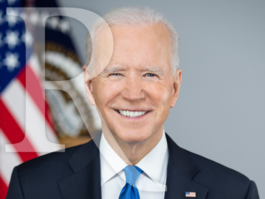Declining Views of the Economy Put Obama's Reelection at Risk
A Commentary By Scott Rasmussen
Consumer confidence fell to the lowest levels of 2012 this past week. Most Americans believe that both the economy and their own personal finances are getting worse. Just 25 percent believe the economy is getting better, and only 22 percent say the same about their personal finances.
Still, the lows of 2012 aren't nearly as bad as they were in the previous three years. But the trend is discouraging. It looks like yet another year starting with improved outlooks for the economy that fade by summer, and it's clearly taking a toll on the American people.
In the summer of 2009, 58 percent thought the economy would be stronger within five years. By the summer of 2010, only 50 percent had such long-term optimism. By last summer, just 46 percent were that upbeat. And now only 40 percent think the economy will be stronger in five years.
That's a pretty depressing trend.
It's especially depressing when you realize that every single night during those four years, a majority of Americans believed the country was in a recession.
Think about that for a moment. Regardless of what the economists say, most Americans believe we are in a recession and have been for more than four years. Despite that dismal starting point, just 40 percent think things will get better in five years.
This suggests that underlying perceptions of the economy have taken a darker turn. Back in 2009, most Americans thought the country was experiencing a normal business-cycle recession. It was harsher than most but expected to be a short-term matter. Throughout 2009, a plurality of Americans thought the economy would be better within a year.
Now, a plurality believes it will get worse over the next year, and many Americans are wondering if our nation will ever make it back. Only 14 percent now believe today's children will be better off than their parents. That's an all-time low.
This is the landscape for Election 2012. The economy is the big issue. People don't like President Obama's track record on the economy, but they're not sure Mitt Romney will do any better.
Some analysts have looked at the landscape and said it's just like the last time we had a president running for re-election. Like Obama today, George W. Bush in 2004 was a polarizing president leading the government of a divided nation. Bush's job approval ratings at this point in 2004 were pretty similar to where Obama's numbers are today.
However, one huge difference between 2004 and 2012 is that President Bush had trends moving in his direction. The big issue that year was the war on terror. In the summer of 2004, just 44 percent thought the United States and its allies were winning that war. In the five weeks running up to the election, however, confidence that our side was winning ranged from 49 percent to 52 percent.
As confidence in Bush's handling of the war improved, so did his job approval rating. That enabled him to post a narrow victory over Sen. John Kerry.
For this president to earn a similar victory over a wealthy Massachusetts challenger in 2012, he will need to improve his own job approval rating between now and Election Day. For that to happen, perceptions of the economy will have to reverse their current downward trend.
Rasmussen Reports is a media company specializing in the collection, publication and distribution of public opinion information.
We conduct public opinion polls on a variety of topics to inform our audience on events in the news and other topics of interest. To ensure editorial control and independence, we pay for the polls ourselves and generate revenue through the sale of subscriptions, sponsorships, and advertising. Nightly polling on politics, business and lifestyle topics provides the content to update the Rasmussen Reports web site many times each day. If it's in the news, it's in our polls. Additionally, the data drives a daily update newsletter and various media outlets across the country.
Some information, including the Rasmussen Reports daily Presidential Tracking Poll and commentaries are available for free to the general public. Subscriptions are available for $4.95 a month or 34.95 a year that provide subscribers with exclusive access to more than 20 stories per week on upcoming elections, consumer confidence, and issues that affect us all. For those who are really into the numbers, Platinum Members can review demographic crosstabs and a full history of our data.
To learn more about our methodology, click here.




